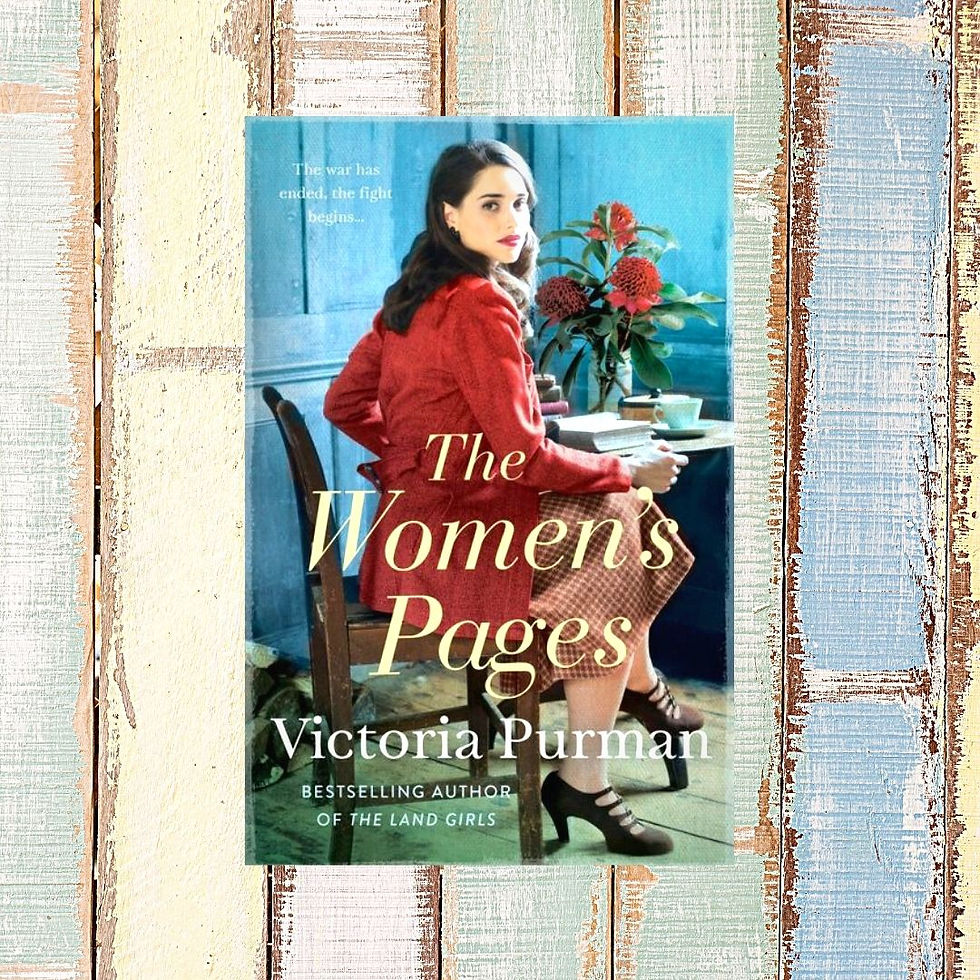THE WOMEN'S PAGES
- Chrissie Bellbrae
- Aug 23, 2020
- 3 min read
“The war has ended, the fight begins…”
Victoria Purman is a wonderful writer of historical fiction and her latest release —
THE WOMEN’S PAGES proves no exception.This is a celebration of survival from the dynamic centre of Sydney’s newsroom to the homes and lives of the people.

Tilly Galloway is a Daily Herald journalist in Sydney, whose insurance clerk husband signed up and left for war shortly after their marriage. The story begins with celebrations breaking out in the city’s streets in August 1945, on the day WWII ends. Both Tilly and her flatmate friend, Mary, anxiously await the return of their prisoner of war husbands. Tilly hasn’t heard from her husband Archie, since the last letter he wrote following his capture by the Japanese in Rabaul, in 1942.
Tilly is whip smart and stubborn. She spent the war years determined to follow her dream of working as a war correspondent with the opportunity to tell the truth about the war. But frustratingly, despite bearing the honorific title of the first official woman war correspondent, she never left Australian soil. The paper refused to send her to Singapore or New Guinea —only male war correspondents were permitted to accompany the troops.
“We are fighting for everything we hold dear, Mr Sinclair. Our very liberty. Our democracy. For the freedoms of enslaved people who are counting on us to be victorious so they may once again live in peace. We’re fighting against nationalism and pure evil. Young Australians, both men and women, are sacrificing their lives every day for this great and just cause. Why wouldn’t I want to cover such a story?”
The research that has gone into this story is brilliant — I’m always interested to gain insight into events that I previously had no knowledge of. I had no idea about the ‘commies’ of the time, or the families of dockworkers and the poor conditions they struggled under to survive during the war. The tragic fate of the Montevideo Maru, is another event in Australia’s history that I hadn’t heard of.
But the most significant research is showcased by the investigation of women’s lives and the exploration of the way their roles changed dramatically during and after the war. This theme is viewed from a variety of perspectives. Mary’s husband Bert, for example, returns from Changi a shadow of the man whose photo Mary kisses on the mantlepiece. As Mary navigates a return to life with her husband once more, we see the rollercoaster of emotions their reunion brings. Many families suffered when the men returned, and this relationship exposes the inevitable strain and stress of his wartime experiences. Every family was changed.

But for me it’s Tilly’s pragmatic yet vulnerable voice that makes for such a poignant and memorable read. With her husband still listed as missing, Tilly tries to navigate the changes that quickly take place as Australians adapt to life after the war. She’s determined to continue working for the paper as a general news journalist and not be relegated to the women’s pages where society events and Agony Aunt and the price of ladies dresses are reported. Tilly’s background from the ‘other side’ of town had given her a more broad understanding of the world — she had grown up sympathetic to the workers point of view — a far cry from the lives of Sydney socialites.
This is where the novel really shines. I loved the interplay of the female journalist, holding it all together under a veneer of toughness and capability, while she struggles to understand what has happened to Archie. But her character proves a revelation. The love for her friends and their troubles, her support of her darling parents, her concern regarding her father’s illness, all belies the underlying difficulty she was facing. What keeps the pace of the narrative moving is that Tilly cannot move on until she has confirmed Archie’s fate.
Tilly’s friend and mentor George Cooper is instrumental in supporting her aims and it is he who props her up when news of her beloved Archie finally reaches her. Their camaraderie is a balanced relationship of playfulness and support — and we want it to grow into become something more. George is definitely a ‘sensitive new age guy’ well before his time.
There are a lot of beautifully drawn characters in THE WOMEN’S PAGES. The clever treatment of Australian life at this time indicates the immense extent of research the author has undertaken. I congratulate Victoria Purman for opening a brilliant window into the world of post-war Australian society— a vision of how change and progress evolved.

Release date: 2/9/20
Thank you to Net Galley for an advanced reader copy in exchange for an honest review.
.png)



Comments